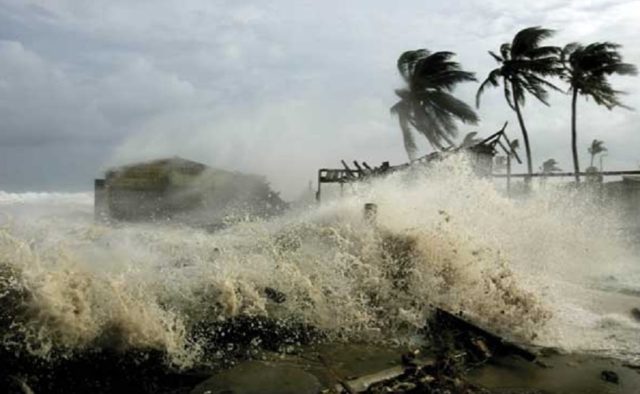Phailin, Helen, Lehar, Nina, Katrina and more are some of the names of cyclones we have heard of. I am sure a lot of us would have wondered how and why they are given these names.
Well, the practice of naming cyclones started years back. With the purpose to ease the communication between the forecasters and general public, cyclones are named such that people finds them easy to understand and remember, rather than using technical terms or numbers which are difficult to memorize.
HISTORY OF NAMING CYCLONES
Initially Cyclones were named in an arbitrary fashion. Then in Mid 1900, cyclones were given Feminine names which were used in an alphabetical order. The purpose of using alphabetical series was to keep a track of occurrence of cyclones. The first cyclone was given a name starting with “A” and so on. Later on both male and female’s names were used in naming cyclones.
WHO GIVES THE NAME AND WHAT IS THE PROCEDURE ?
A storm is given a name when it reaches the tropical storm strength with winds of 39 mph.
Cyclones derive their names through a systematic procedure laid down by the World Meteorological Organisation (WMO) and the United Nations Economic and Social Commission for Asia and the Pacific (ESCAP).There are tropical Cyclone Regional Bodies which meet on annual or bi-annual basis and decide the names of cyclone using the pre-determined rules.
For ex: Regional Specialized Meteorological Centre, New Delhi is the governing body for Indian Ocean Region. Panel assigns name of cyclones occurring in Arabian Sea and Bay of Bengal .The Panel consists of 8 countries – Bangladesh, India, Maldives, Myanmar, Oman, Pakistan, Sri-lanka and Thailand. The member countries are listed alphabetically and the names suggested by each country are written in columns in front of that country’s name. While naming the cyclone, the first name of cyclone will be the first name of column one, then second name of column one is used and so on till last row in the last column.

So you see, the names of cyclones are prepared even before they occur.
Different organizations have different rules and regulations in terms of usage of list. For ex: RSMC Tropical Cyclone does not rotate the list of names of cyclones whereas Atlantic and Pacific Lists are re-cycled every six years. So the list used in 2014 can be used again in 2020.
DO’S AND DON’Ts OF NAMING CYCLONES
Each member of the panel can decide the name of the cyclone but they have to meet some basic conditions:
– The name should be short.
– It should be easily understood by the people.
– The name should not be culturally sensitive
– The cyclones which have caused huge loss of life and property are retired and are not used again.
WHAT HAPPENS WHEN A CYCLONES MOVES FROM ONE REGION TO ANOTHER ?
If a tropical cyclone moves from one basin to another its name is generally retained. But there are certain exceptions to it. For ex : when a tropical cyclone moves from the Australian region into the South-West Indian Ocean, the Mauritius Meteorological Service will rename it. However, in the opposite case i.e. when a cyclone moves into Australian region into the South-West Indian Ocean, its name remains unchanged.The regional bodies have
However, in the opposite case i.e. when a cyclone moves into Australian region into the South-West Indian Ocean, its name remains unchanged.The regional bodies have list of names already prepared so that they can immediately issue the name as soon as the tropical cyclone occurs.
Since these names are pre-determined, now all of us can know the name of cyclone even before it occurs. The next cyclone will be named – Nanauk. Though we hope a time comes when these names are no more needed.
Image Credits: Google Images
Other Recommendations:
http://edtimes.in/2012/11/scary-pictures-from-hurricane-sandy-and/

































